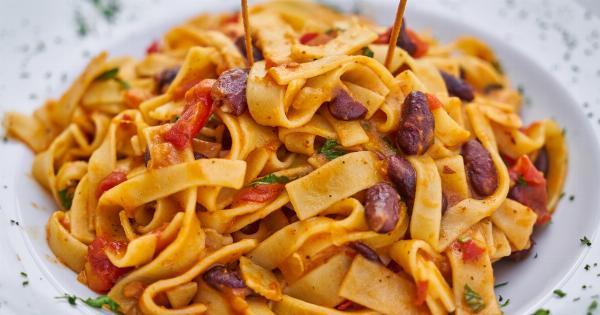It can be challenging to find gluten-free options when you’re looking for your favorite pasta dishes. Many traditional pasta brands contain wheat flour, which is off-limits for individuals with celiac disease or a gluten intolerance.
Fortunately, there are several gluten-free pasta alternatives on the market that offer the same great taste and texture. In this article, we’ll discuss the benefits of gluten-free pasta and how you can indulge in spaghetti guilt-free with gluten-free pasta.
What is gluten?
Gluten is a protein found in wheat, barley, and rye. While most people can consume gluten without any issues, individuals with celiac disease or a gluten intolerance cannot tolerate it.
When someone with celiac disease or a gluten intolerance eats gluten, it triggers an immune response that damages the lining of their small intestine. Over time, this can lead to malabsorption of nutrients and a host of related health problems.
What is gluten-free pasta?
Gluten-free pasta is made from alternative flours, such as rice, quinoa, or corn. These flours do not contain gluten, making them a safe option for individuals with celiac disease or a gluten intolerance.
Gluten-free pasta is typically available in the same shapes and sizes as traditional pasta, so you can still enjoy your favorite dishes, such as spaghetti, fettuccine, or mac n’ cheese.
The benefits of gluten-free pasta
Gluten-free pasta is not only safe for individuals with celiac disease or a gluten intolerance; it also offers several health benefits. For one, gluten-free pasta is often lower in calories and carbohydrates than traditional pasta.
This can be beneficial for individuals looking to lose weight or manage their blood sugar levels. Gluten-free pasta is also a good source of fiber, which is essential for digestive health.
How to cook gluten-free pasta
Cooking gluten-free pasta is similar to cooking traditional pasta. Here are some tips to help you cook perfect gluten-free pasta:.
- Use a large pot of salted water to cook the pasta.
- Stir the pasta occasionally to prevent it from sticking together.
- Consult the package instructions for cooking time, but check the pasta a few minutes early to ensure it doesn’t overcook.
- Be careful not to overcook gluten-free pasta, as it can become mushy quickly.
Gluten-free spaghetti sauce recipes
One of the best things about spaghetti is the sauce. Fortunately, many spaghetti sauces are already gluten-free, such as classic tomato sauce or meat sauce.
However, if you’re looking for something a little different, try one of these gluten-free spaghetti sauce recipes:.
Bolognese Sauce
Ingredients:.
- 1 pound ground beef
- 1/2 onion, finely chopped
- 2 cloves garlic, minced
- 1 can crushed tomatoes
- 1/3 cup tomato paste
- 1 cup beef broth
- 1/2 teaspoon dried basil
- 1/2 teaspoon dried oregano
- 1/2 teaspoon salt
Directions:.
- In a large pot, brown the ground beef over medium-high heat until fully cooked.
- Add the onion and garlic and sauté until tender.
- Add the crushed tomatoes, tomato paste, beef broth, basil, oregano, and salt. Bring the mixture to a boil.
- Reduce heat to low and let the sauce simmer for 30-40 minutes, stirring occasionally.
Pesto Sauce
Ingredients:.
- 2 cups fresh basil leaves
- 1/2 cup pine nuts
- 3 cloves garlic
- 1/2 cup olive oil
- 1/2 cup grated Parmesan cheese
- Salt and pepper to taste
Directions:.
- In a food processor, combine the basil, pine nuts, and garlic. Pulse until finely chopped.
- With the food processor running, slowly add the olive oil until the mixture is smooth.
- Stir in the Parmesan cheese, salt, and pepper.
- Toss the pesto with cooked gluten-free spaghetti.
Conclusion
Gluten-free pasta is a safe and healthy alternative to traditional pasta, making it a great option for individuals with celiac disease or a gluten intolerance.
With the same great shape and taste as traditional pasta, you can still enjoy your favorite dishes, guilt-free. Use the tips and recipes in this article to indulge in spaghetti without compromising your health.































